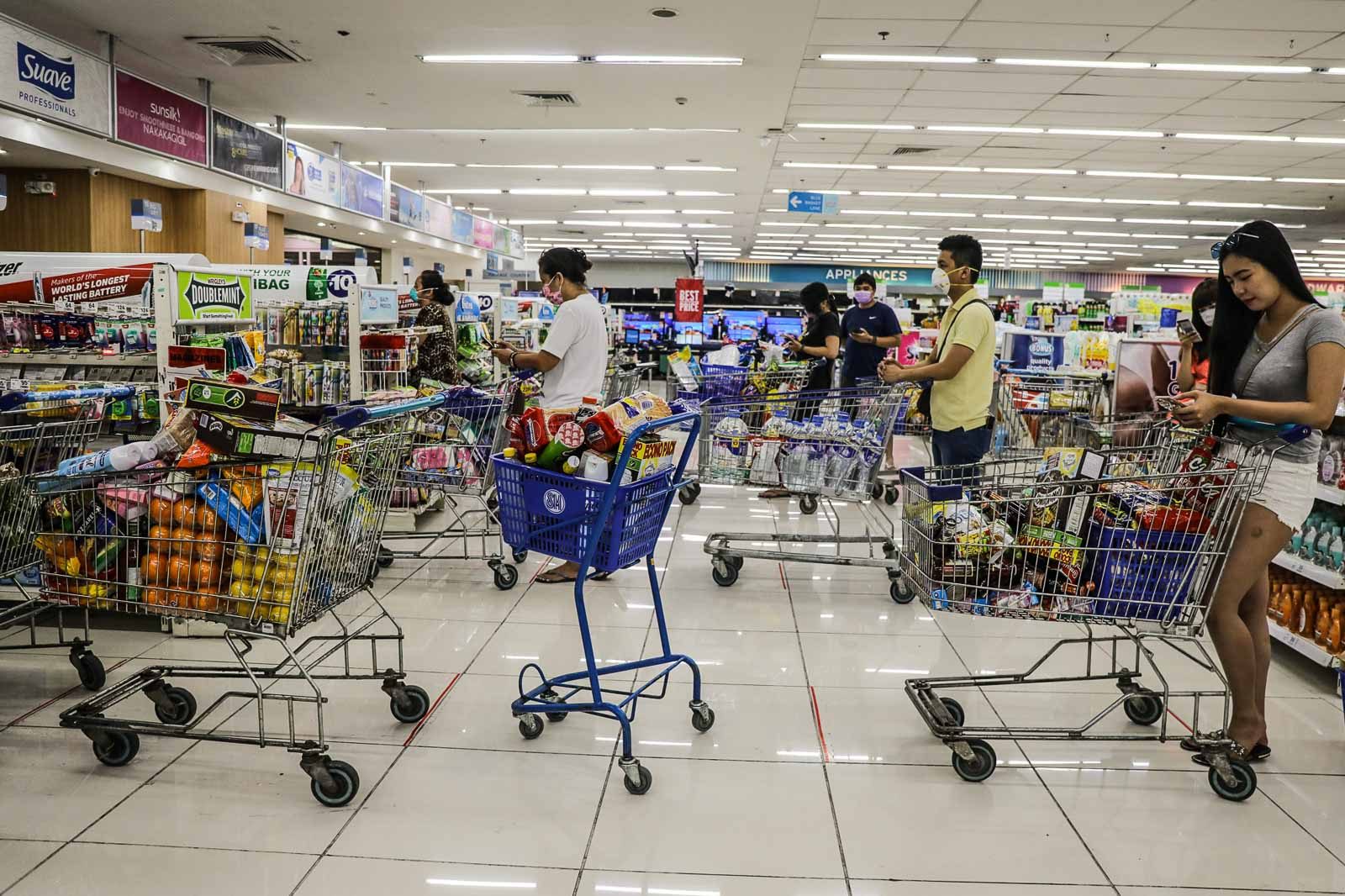SUMMARY
This is AI generated summarization, which may have errors. For context, always refer to the full article.

MANILA, Philippines (UPDATED) – Inflation eased to 2.5% in March 2020, as oil prices plummeted in the world market due to the novel coronavirus, said the Philippine Statistics Authority on Tuesday, April 7.
The latest figure is lower than the 2.6% recorded in February 2020 and the 3.3% in March 2019.
Easing of transportation costs to 1.8% during the month drove inflation down. Petroleum and fuels for personal transportation fell to -12.3% from 1.2% in February.
Domestic airfare dropped to 1.8% from 4.9% in February. Ferry and ship fares declined to 12.5% from 39.3%.
Kerosene (-13.%), electricity (-7.2%), and liquefied petroleum gas (3.2%) registered slowdowns as well.
Slower annual increments in alcoholic beverages and tobacco (18%); and housing, water, electricity, gas, and other fuels (1.1%) also pushed down inflation.
But food inflation inched up by 2.6%. Fish (1.5%), fruits (9.9%), and vegetables (8.1%) all registered higher annual markups.
Meat prices fell to 2.6% from 2.9% in February.
Bread and cereals, as well as pasta prices, slowed down to 2.6%, while milk, egg, and cheese retained their previous month’s rate of 3.4%.
The National Capital Region’s inflation rate decelerated to 1.7% from 2%, while areas outside the capital posted 2.7% from 2.8%.
Year-to-date, inflation stands at 2.7%.
However, falling prices do not necessarily mean a win for consumers this time around.
The Philippines started to implement lockdowns in March, halting almost all segments of the economy. Experts project a contraction of economic growth due to the virus. (READ: Farmers trash spoiled vegetables while poor go hungry)
The easing of prices gave the Bangko Sentral ng Pilipinas room to cut both interest rates and the amount banks need to hold in their reserves. The moves then helped inject the much needed liquidity into the financial system and support the government’s efforts to fight the pandemic. – Rappler.com
Add a comment
How does this make you feel?
There are no comments yet. Add your comment to start the conversation.